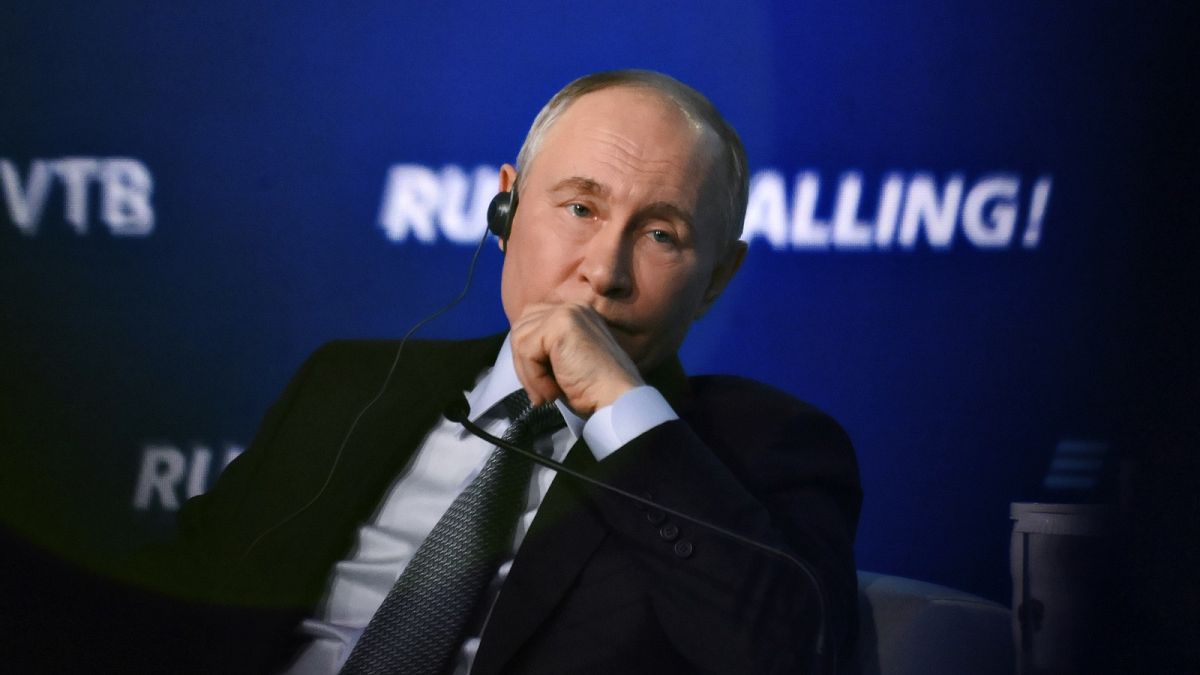The Kremlin is using old-age, poorly kept tankers to sell its crude oil above the price cap established by Western allies.
The European Union on Wednesday issued new sanctions against Russia, targeting the “shadow fleet” of tankers that Moscow has deployed to circumvent Western restrictions on oil trade and maintain a source of revenue that is crucial to fund the war on Ukraine.
The fleet consists of old-age, uninsured ships whose poor condition has stoked fears of an impending environmental disaster near or inside European waters.
A handful of Chinese companies suspected of enabling Russia’s production of drones are also blacklisted as part of the agreement, a diplomat told Euronews.
The sanctions were sealed by ambassadors of the 27 member states during a meeting on Wednesday and represent the 15th package since the start of the Russian invasion in February 2022.
“The EU and its G7 partners are committed to keeping pressure on the Kremlin,” said Ursula von der Leyen, the president of the European Commission.
Specific details of the restrictions were not immediately available but the package is believed to be modest compared to previous decisions. The discussions began last month and proceeded with little controversy among countries.
Lithuania, which raised complaints about a derogation that allows European companies to exit the Russian market, was the last hold-out, two diplomats said.
It marks the first sanctions agreed during Hungary’s presidency of the Council of the EU, which many diplomats had feared would slow down action on the war front due to Budapest’s insistence on maintaining close ties with Moscow.
The main focus of the 15th package is the so-called “shadow fleet” that Russia has been using to bypass the price cap that Western allies introduced in late 2022 to curtail the sales of Russian seaborne oil worldwide.
The cap was set at $60 per barrel for crude oil and prohibits Western companies from providing services to Russian tankers, such as insurance, financing and flagging, that sell crude oil above the agreed-upon price.
As a way out, Moscow began using aging, poorly kept tankers, some of them over 20 years old, that use obscure ownership and insurance structures that effectively escape the control of G7 allies. These ships move with “flags of convenience” from countries reluctant to follow Western sanctions, such as Panama, Liberia and the Marshall Islands.
The “shadow fleet” has been accused of deceptive practices, including transmitting falsified data and turning off their transporters to become invisible to satellite systems, and conducting multiple ship-to-ship transfers to conceal the origin of the oil barrels.
The condition of these ships is so bad that Brussels worries they could spill oil and cause an environmental catastrophe near the bloc’s territory. The lack of proper insurance could make it more difficult to contain the damages at sea.
Despite the obvious risks, Moscow continues to rely on these tankers to trade its crude oil, an essential source of revenue to finance the large-scale invasion of Ukraine and sustain the high-intensity war economy.
Between February 2022 and June 2024, Russia earned €475 billion in revenue from oil exports, representing 68% of total fossil fuel export earnings, according to the Centre for Research on Energy and Clean Air (CREA).
China and India are currently the main buyers of Russian oil, which is often refined in the countries and sold into the EU market with a different label.
The “shadow fleet” is estimated to have around 600 ships, although no official number exists due to the Kremlin’s secrecy of information.
The sanctions agreed by EU countries on Wednesday target around 50 ships belonging to the “shadow fleet,” diplomats said. The previous package had placed 27 ships on the blacklist, denying them access to EU ports and banning the provision of EU services.
Read the full article here
